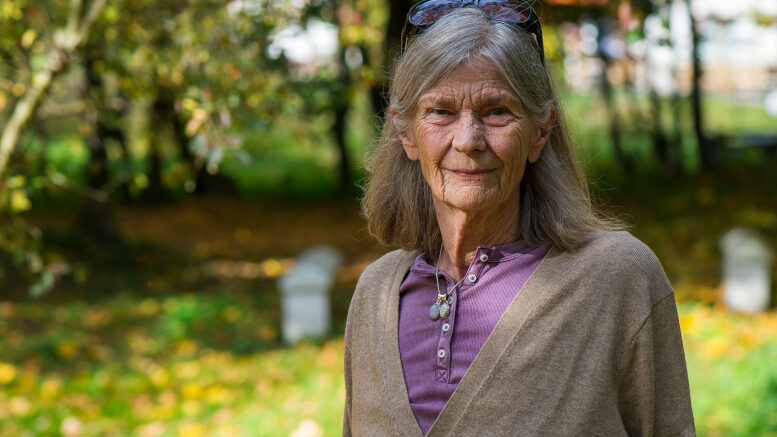INTERVIEW – Caren Kershner has been an activist in the Colorado hemp movement since 2012, when the U.S. state legalized all forms of cannabis. An advocate for the plant and its potential to uplift economically depressed agricultural areas, she carried out early research on hemp as a dryland, high-altitude crop, and studied methods for reducing cross-pollination. She has also conducted case studies on medical marijuana patients, developed a basic curriculum for medical professionals treating MMJ patients at home and managed one of Colorado’s first medical marijuana dispensaries. An educator in science and art for 30 years, Kershner is a past recipient of the Grow Hemp Colorado Educator award (2014). She is the founder of Herbal Extraction Resource Specialists, a boutique consultancy.
HempToday: Hemp is touted as a resilient crop. But we’ve hemp farmers suffer pest invasions and the effects of drought. How resilient is hemp compared to other common crops?
Caren Kershner: It depends on the cultivar. Those that adapted to our environment had a tendency to run hot, which is why we need to have different rules that make industrial hemp entirely exempt from THC limits. As far as resiliency, we didn’t use any herbicide or insecticide, but used milk and coffee grounds to fight bugs. Still, we had insects in flowers, and powdery mildew in some plants.
HT: The entire U.S. West seems to have challenges with water. What can you tell us about hemp as a dryland, high-altitude crop in that context?
CK: You can’t depend on rainfall in Colorado or anywhere out West. The big farmers are growing under circular sprayers in order to provide adequate moisture. But hemp requires less water than any other crop, less than the alfalfa, barley and winter wheat many farmers grow. So it represents water savings.
HT: How real are the concerns about cross-pollination with marijuana fields?
CK: We tested this on a small scale by planting the two crops about 40 feet apart on opposite sides of a building, with sunflowers as barrier crops. We didn’t observe any cross-pollination but if you have big fields of hemp and marijuana that could be problematic. I’m in favor of setting a minimum distance. Also, growers need to be aware that ventilation systems on some greenhouses where they grow CBD actually can collect pollen from the air.
HT: The CBD frenzy dragged down the entire U.S. sector, and hit Colorado hard. How do you assess what happened with CBD sector and the effect of the crash on the hemp industry overall?
CK: The CBD frenzy really set the hemp industry back as far as I am concerned. It was helpful for a lot of people, but it misdirected the industry and overrode any other opportunities in hemp. On the other hand, it also opened the door to using different cannabinoids by isolating them from hemp. Which is a mixed bag because I don’t like the unhealthy solvents that they use in the extraction process. If you can’t purge and get rid of the solvent material entirely, it takes a lot away from the terpenes – one of the real wonders of the cannabis plant – in the final product.
HT: What’s the answer to that problem?
CK: The absolute best way to extract any cannabinoid is by using ethanol. You can boil it off, and you’re left with the pure cannabinoids behind.
HT: The CBD crash has led to the rise in hemp-derived delta-8 THC products. What’s your view on delta-8?
CK: Products from delta-8 were never envisioned in the (2018) Farm Bill, which was intended to guide hemp agriculture for industrial applications – fiber and food. And the d-8 producers are often using biomass that has been sitting in storage, which means the threat of flowers that are damp and maybe moldy, or totally dried out and crisp with degraded terpenes. It also raises the question about extraction again. Unless you have a lab where you can 100% purge the solvents, the products will be contaminated. We have people who are doing extraction through kitchen chemistry in their backyards. We need to protect the public from those products.
HT: What is the potential for non-CBD outputs in Colorado? How much interest is there in food and construction among Colorado farmers?
CK: Construction shows a lot of promise. I see a lot of people who are looking at hempcrete as an alternative. The right varieties of fiber hemp can grow tall in Colorado, but supplies of raw materials can still be scarce. I don’t see a huge market for food yet although there seems to be a growing market for protein powder. That can be part of a dual crop strategy combined with fiber harvesting. Processed products which are not pure hemp – like ice cream, hemp burgers, etc. – are mostly limited to specialty outlets, and don’t seem to have a broader market.
HT: As an educator, what would you say about the general awareness of hemp at this point? And what are youth attitudes around hemp?
CK: Of course, there are still a lot of misconceptions out there, but young people have a more open attitude toward accepting and even embracing hemp. Universities are teaching cannabis courses, and young people can participate in work-study type programs with farmers. Students in some rural schools can go off for a week and learn about the hemp trade. It means they’re getting exposed at an earlier age to the positive aspects of hemp.

